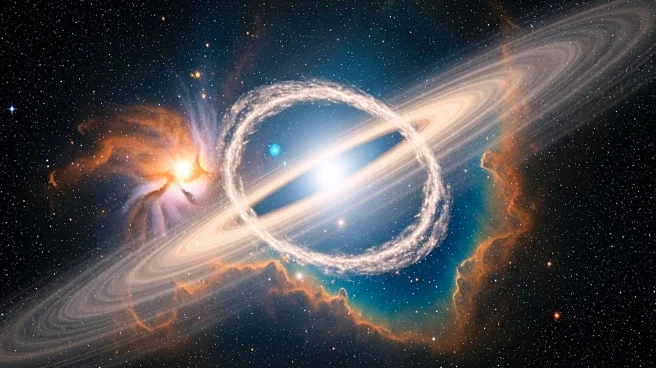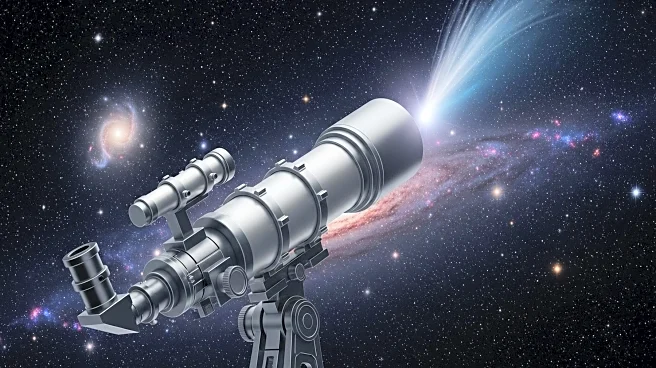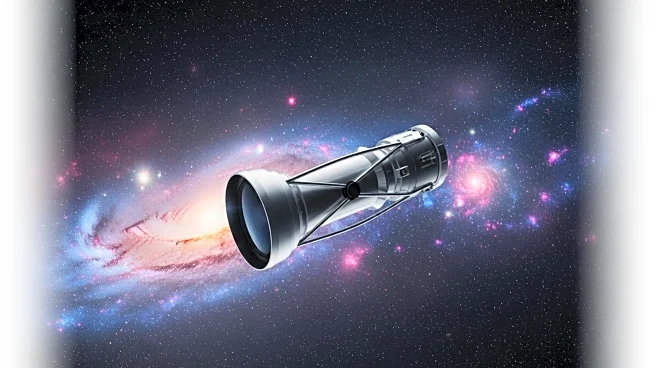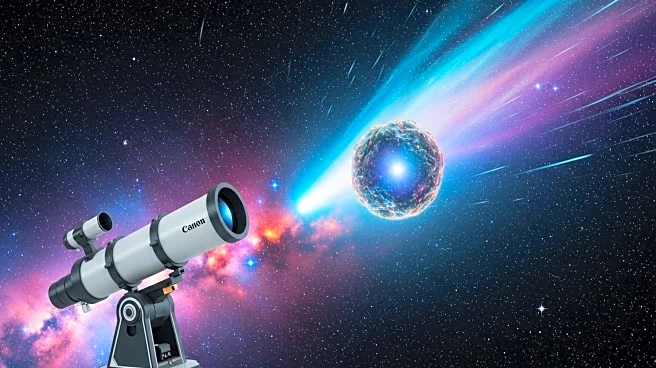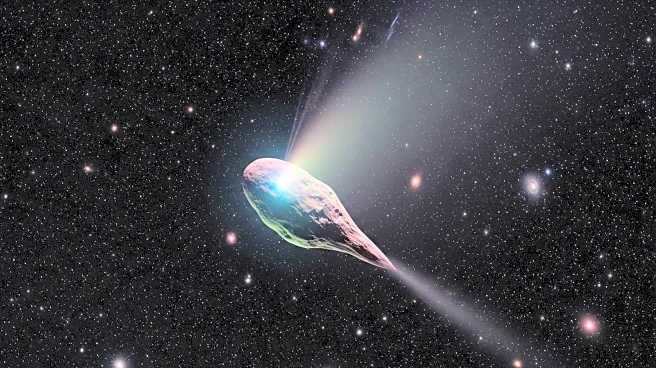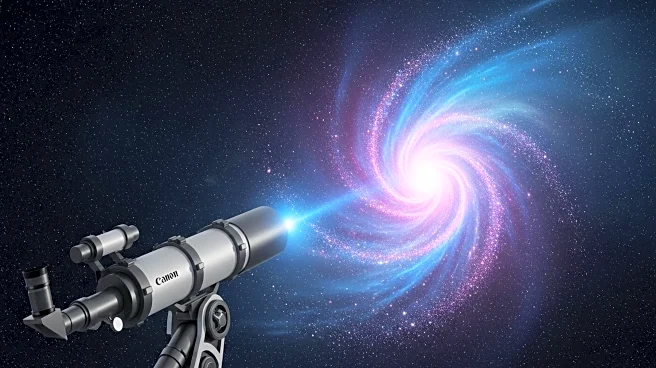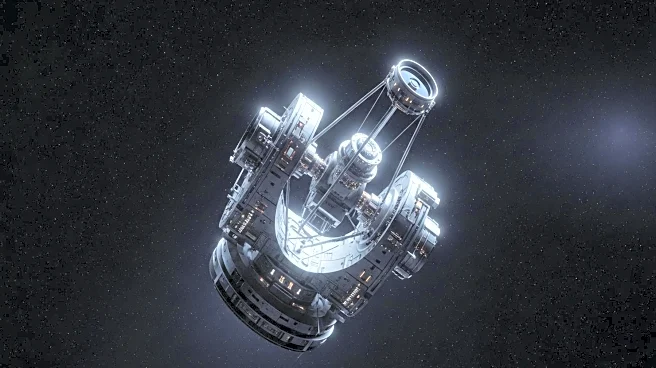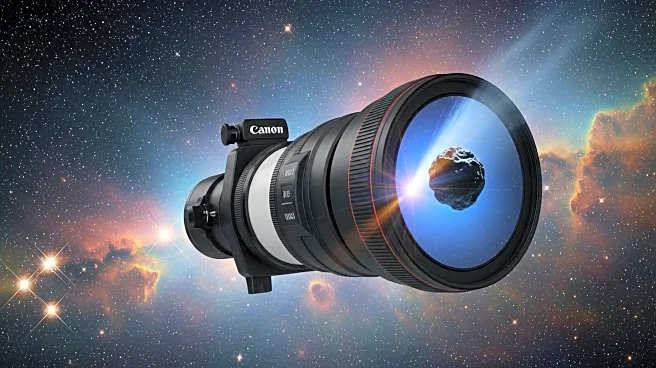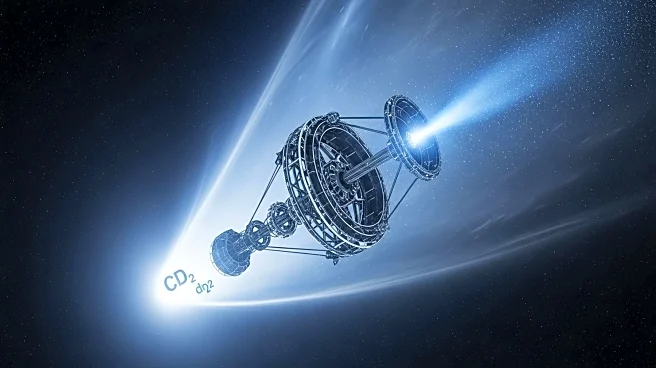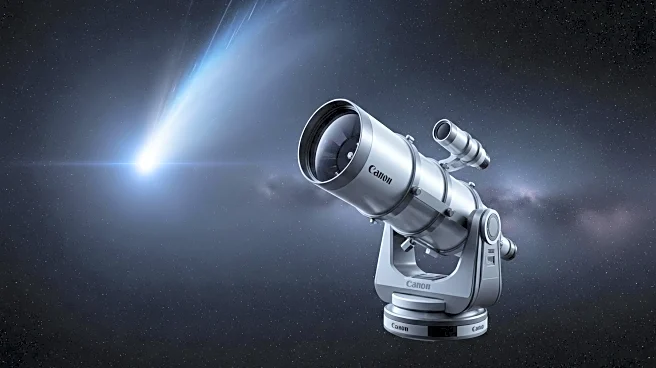What's Happening?
Astronomers using the James Webb Space Telescope (JWST) have discovered a peculiar protoplanetary disk around the infant star XUE 10, located in the star-forming region NGC 6357, approximately 5,550 light-years from Earth. The disk exhibits an unusual chemical composition, with a high concentration of carbon dioxide and a low presence of water vapor, challenging existing models of planet formation. The discovery was made by the eXtreme Ultraviolet Environments (XUE) collaboration, which studies the impact of intense radiation fields on disk chemistry. The findings suggest that ultraviolet radiation from the host star or nearby massive stars may be altering the disk's chemistry.
Why It's Important?
This discovery is significant as it challenges current models of disk chemistry and evolution, which typically predict water vapor dominance in planet-forming regions. The high levels of carbon dioxide relative to water in the disk could reshape our understanding of planet formation processes. Understanding these chemical dynamics is crucial for grasping the diversity of planetary atmospheres and their potential habitability. The JWST's ability to detect chemical fingerprints in distant disks during crucial stages of planet formation underscores its importance in advancing exoplanet science.
What's Next?
The research team plans to further investigate the effects of extreme radiation environments on the building blocks of planets. Future studies may focus on how these environments influence the formation of planetary atmospheres and their habitability potential. Continued observations with the JWST and other telescopes will be essential in refining models of disk chemistry and evolution.
